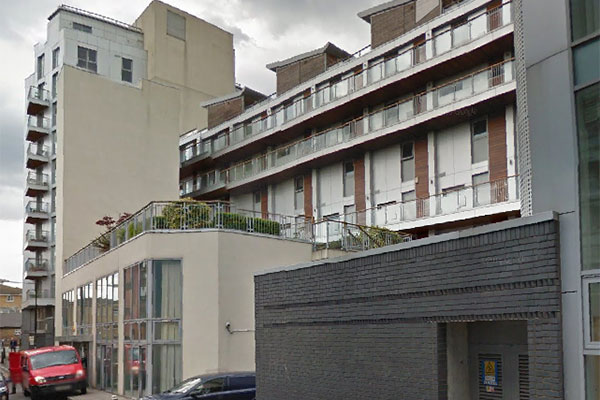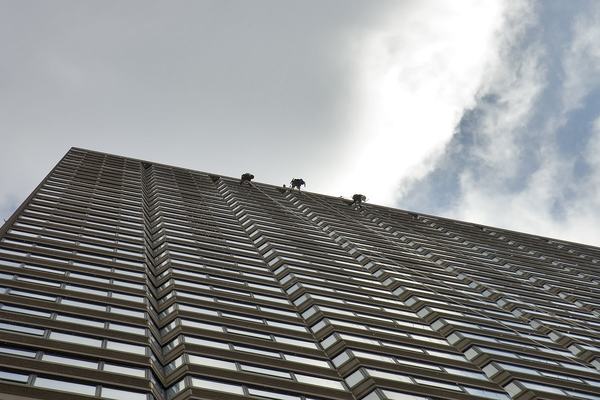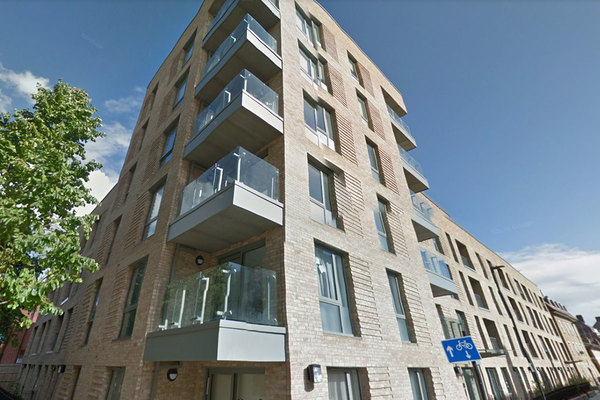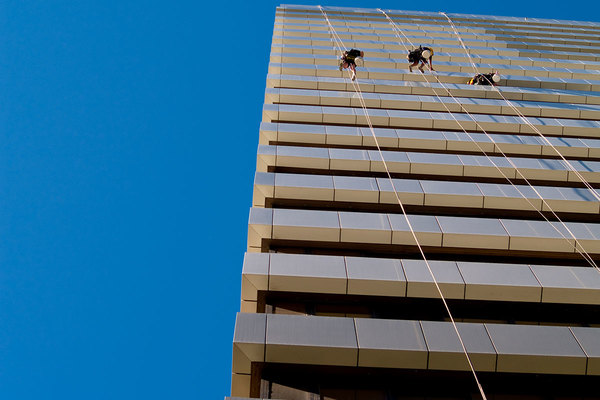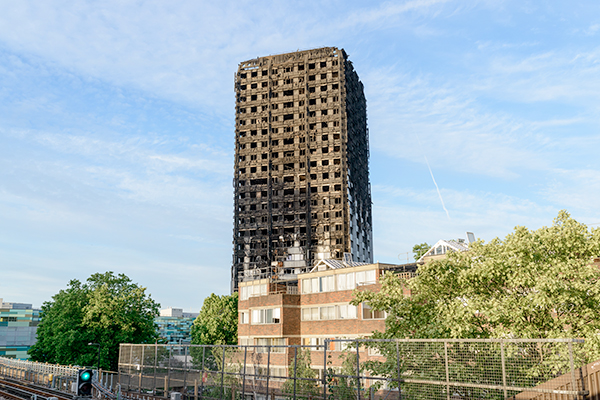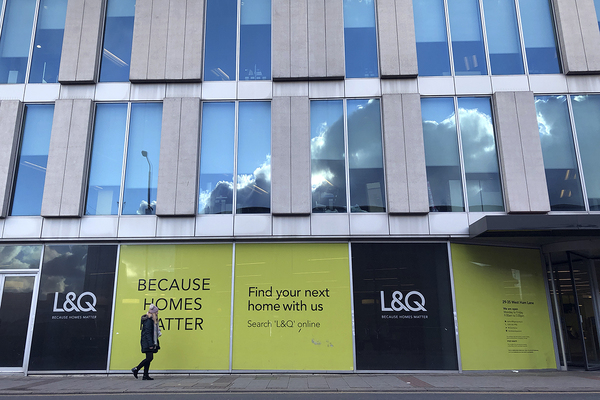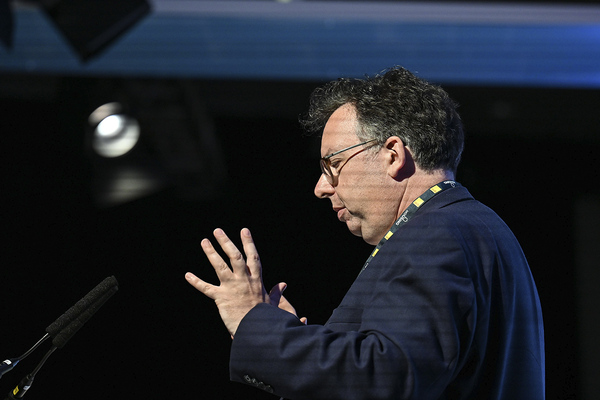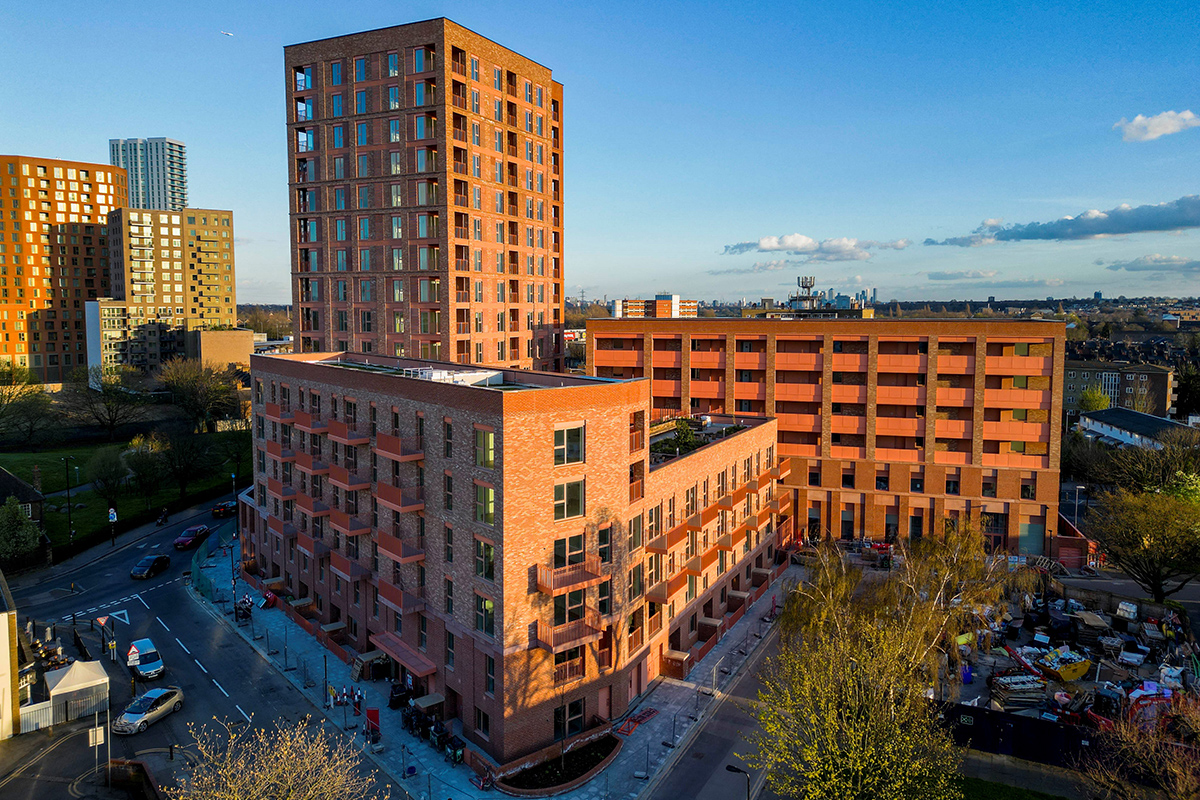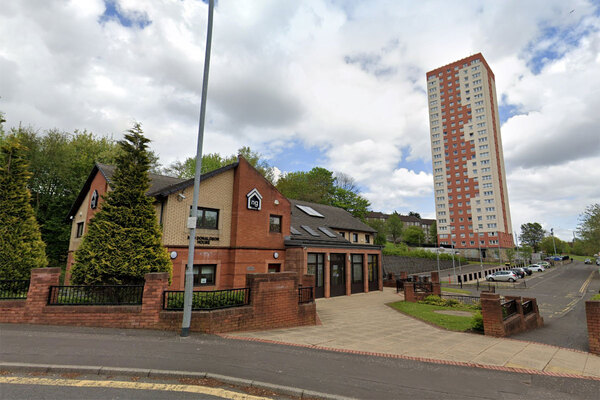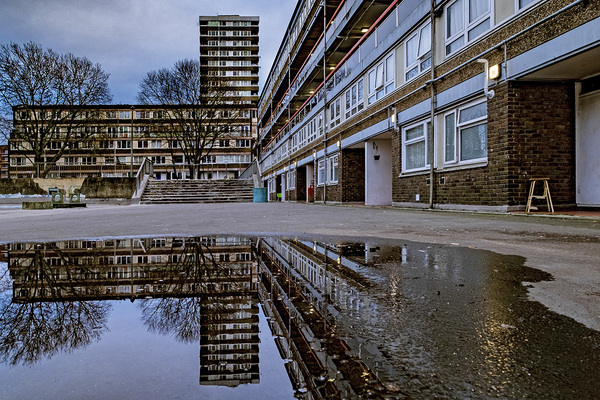You are viewing 1 of your 1 free articles
Leaseholders in London block face service charge hike over removal of Grenfell-style cladding
Leaseholders in a block of flats in east London with Grenfell-style cladding are facing escalating service charges after the building’s freeholder refused to pay for its removal.
The residents of Victoria Wharf in Tower Hamlets have been paying for three 24-hour-a-day fire wardens since November, after it was found that the aluminium composite material (ACM) cladding was similar to that used on Grenfell Tower.
The leaseholders of the 82 flats have also been asked to pay up front for the installation of an electronic fire alarm system, at an estimated cost of £35,000.
Emails between leaseholders and the building’s managing agent Sterling Estates Management, seen by Inside Housing, show that the company would not begin installation of the alarm system until the bulk of the cost had been recouped through increased service charges. This was despite the 24-hour fire watch costing an estimated £24,000 each month.
Once the alarm system is installed, the number of wardens on the site can be reduced from three to one. But installation has been further delayed after it was found that the system being used was not compliant with updated guidance from the National Fire Chiefs Council (NFCC), despite work on the alarms only commencing after the publication of the new guidance in May.
Leaseholders will receive their next bi-annual service charge bill next month but have not yet been informed how much it will increase by.
Work to upgrade the system in compliance with the new guidance has now begun.
According to emails sent to residents the block was originally owned by an Irish-based company, Columbia Estates Management, but was later transferred to Kedai Limited. Both companies list David and Patrick Kennedy as directors. It is unclear who currently owns the building.
Inside Housing has contacted a company run by Mr Kennedy to reach him for comment and Sterling Estates Management. Mr Kennedy did not respond and Sterling Estates Management declined to comment.
According to government figures from February, cladding on 130 private residential blocks has failed fire safety tests since the Grenfell Tower fire last June.
Former housing secretary Sajid Javid said building owners have a “moral duty” to pay for the cost of removing and replacing dangerous cladding. His successor James Brokenshire has since echoed the sentiment, saying that “leaseholders should be protected from unfair costs and we expect the industry to do the right thing”.
Some freeholders and property managers have made warranty claims on behalf of leaseholders to cover the cost of cladding removal. However, as Victoria Wharf is more than 10 years old, its structural warranty is likely to have lapsed.
It is understood that at least one leaseholder in the block has been unable to sell their property at or near the original asking price because the cladding is still on the building.
Another leaseholder told Inside Housing: “It’s reliant on the freeholders ‘doing the right thing’ but they are clearly not going to.”
Mr Brokenshire has met private leaseholders, including some from Victoria Wharf, to discuss their concerns.
A spokesperson from the Ministry of Housing, Communities and Local Government said: “There is a moral imperative for private sector landlords to do the right thing and foot the bill for removing unsafe cladding, and not leave leaseholders to cover the cost.
“A number of leading developers in the private sector have stepped up to the mark and agreed to do the same, and we urge others to follow their lead. If they don’t, we have not ruled anything out.”
The Grenfell Tower Inquiry
Closing statements
Day 85: victims' lawyers attack the fire brigade
Further expert evidence
Including some additional evidence from emergency call handlers, bereaved and relatives
Day 84: further evidence from survivors and relatives
Day 83: swift evacuation of tower possible if residents alerted
Day 82: initial fire was extinguished but then returned to the flat
Day 81: overheating fridge-freezer most likely cause of fire
Day 80: fire doors installed did not match product tested
Day 79: resident advised to stay put despite fire in flat
Day 78: insulation and cladding material below required standard
Day 77: molten plastic spread blaze down tower
Day 76: 'stay put' should be dropped when fire spreads across floors
Other witness evidence
Police, ambulance, gas suppliers, council, TMO and call room operators give evidence
Day 75: call room operators give evidence
Day 74: further evidence from TMO officers
Day 73: TMO boss failed to pass information to firefighters
Day 72: fire finally extinguished when gas switched off
Day 71: further questions over stay put advice
Day 70: the police evidence
The bereaved, survivors and relatives’ evidence
Day 69: video shows smoke billowing through fire door
Day 68: KCTMO removed self closing mechanism and never replaced it
Day 67: gaps in cladding fixed with duct tape
Day 66: 'don't fix broken system with a sticking plaster'
Day 65: survivor dragged disabled man down nine floors to safety
Day 64: KCTMO 'did not replace broken fire door'
Day 63: foam insulation inside cladding 'exposed' says survivor
Day 62: father gives harrowing account of son's death
Day 61: council’s management organisation slammed for faulty electrics
Day 60: stay put advice ‘led to deaths’, residents say
Day 59: residents describe problems with new windows
Day 58: survivor describes how daughter saved his life
Day 57: firefighter evidence ‘a slap in the face’, says survivor
Day 56: relations with contractor were ‘toxic’
Day 55: resident 'never happy' with stay-put advice
Day 54: tenant gives evidence about housing association
Day 53: stay put advice 'felt like trap'
Day 52: resident saved by son's phone call
The firefighters’ evidence
Day 51: firefighter feared encouraging residents to jump
Day 50: the LFB commissioner
Day 49: fire chief reveals frustration over lack of building plans
Day 48: internal fire spread 'bigger story' than cladding
Day 47: fire officer considered evacuating crews over building collapse fears
Day 46: 'we were improvising' senior firefighter admits
Day 45: firefighter urged for abandonment of 'stay put' policy
Day 44: firefighter recalls radio signal difficulties
Day 43: call hander 'uncomfortable' with insisting residents stay put
Day 42: residents only told to leave if they called fire brigade back
Day 41: breathing equipment delay 'hampered rescues on upper floors'
Day 40: chiefs told firefighters to abandon policy
Day 39: firefighters reveal dramatic rescue of children
Day 38: firefighters issue aplogies to families
Day 37: council 'unable to provide tower plans'
Day 36: QC defends inquiry process
Day 35: Javid would welcome interim recommendations
Day 34: water from hose 'too weak' to reach the flames
Day 33: 'oh my god, we've been telling people to stay put'
Day 32: further fire fighter describes lack of equipment and low water pressure
Day 31: 'incredibly difficult' task of recording information outlined
Day 30: struggle to maintain control over rescue operation described
Day 29: fire service 'overwhelmed' by survival guidance calls
Day 28: 'the building beat us'
Day 27: firefighters 'forced to abandon plans to reach roof'
Day 26: poor signage hindered rescue efforts
Day 25: water pressure left firefighting equipment 'like garden hose'
Day 24: decision to abandon 'stay put' explored
Day 23: TV images 'could have assissted' rescue effort
Day 22: description of hectic scenes in the control centre
Day 21: account from the fire service 'nerve centre'
Day 20: firefighter describes 'huge volume' of calls from trapped residents
Day 19: firefighter 'given no training on cladding fires'
Day 18: evacuation would have been 'huge catastrophe'
Day 17: firefighters describe access and lift issues
Day 16: scenes of carnage likened to 9/11
Day 15: firefighters recount trauma of survival guidance calls
Day 14: firefighters describe spread of blaze
Day 13: firefighters recall radio difficulties
Day 12: "it was like a war zone"
Day 11: questions raised over fire fighters' radios
Day 10: watch manager emotional under questioning
Day nine: lead firefighter 'not trained in stay put policy'
The expert reports: authors give evidence to inquiry
Day eight: where the fire started
Day seven: what was in the cladding?
Day six: the cause and spread of the fire
Day five: expert highlights key issues
Day four: firefighters defend response to fire
Day three: council and contractors appear for the first time
Day two: lawyers for the survivors make their case
Day one: expert evidence released on cladding and stay put
The commemoration hearings
30 May: Grenfell Council 'recognised it should not house disabled victim above four storeys'
29 May: Anger on day six of the Grenfell Inquiry
25 May: Grenfell families 'forced to live in chimney with stay put policy'
24 May: Grenfell family complained about father being housed on 17th floor
23 May: Tributes to children on third day of Grenfell hearings
22 May: Emotions run high as Grenfell bereaved shown footage of the tower burning
21 May: Grenfell victims share tributes as inquiry opens
The ‘Class 0’ debate explained
- Since the Grenfell Tower fire, the government has insisted that its official guidance, Approved Document B, required cladding panels to be of ‘limited combustibility’. But many industry figures disagree, saying that the standard the guidance set was ‘Class 0’ or ‘Euroclass B’.
- Approved Document B sets limited combustibility as the standard for ‘insulation materials/products’ in paragraph 12.7. It sets Class 0 or Euroclass B as the standard for ‘external surfaces’ in paragraph 12.6.
- Paragraph 12.7 says that “insulation product, filler material etc” must be of limited combustibility. In a letter to social landlords on 22 June, the government said that the word ‘filler’ in this context covered the plastic in between the aluminium sheets in the cladding.
- But experts have disputed this view, pointing out that the cladding itself does not have an insulation function.
- The cladding used on Grenfell was certified to Class 0 and so would apparently have met the official standard for external walls.
- This debate remains crucial in assessing the liability for the removal of cladding, much of which is also rated Class 0, from hundreds of tower blocks nationwide.
